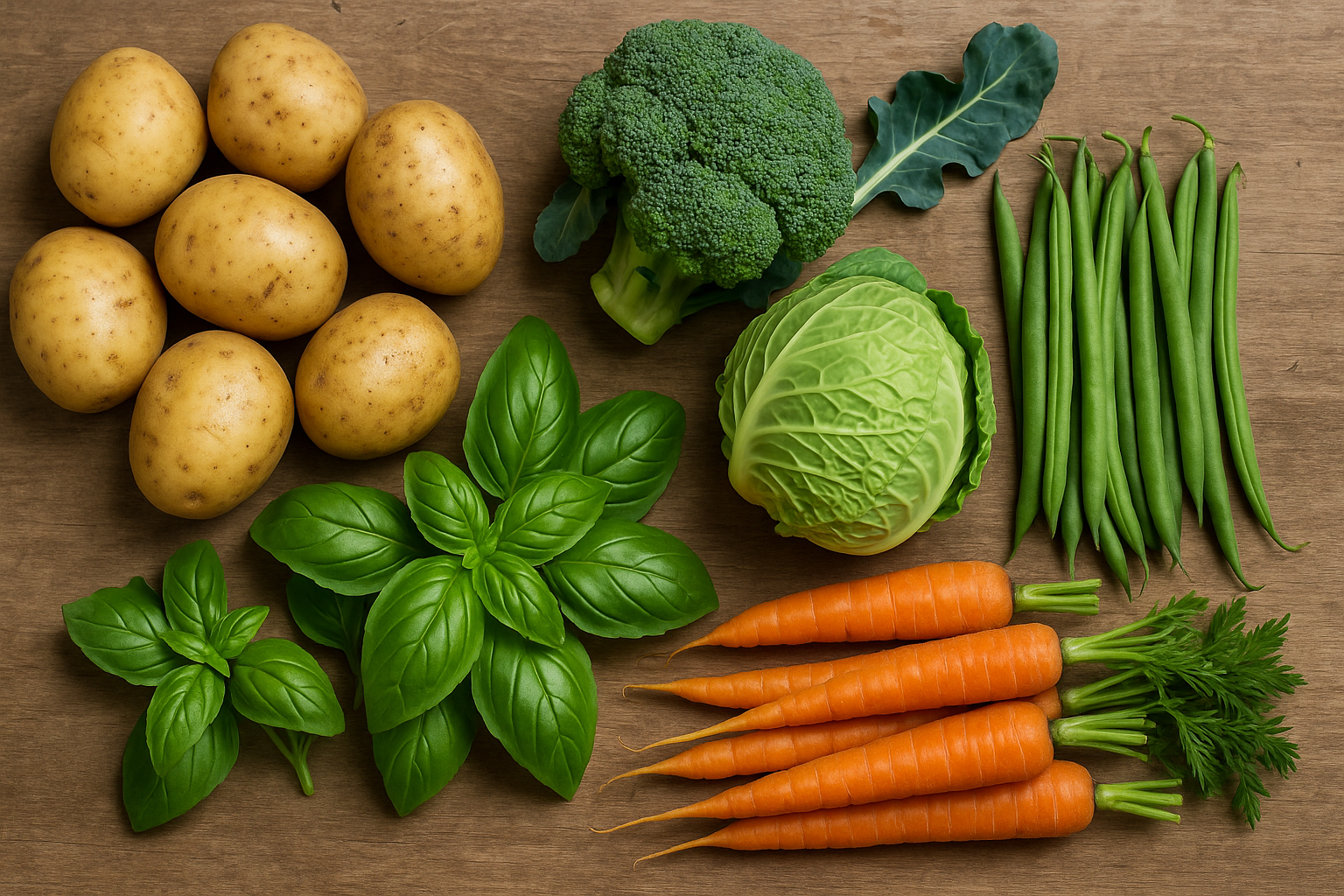I can share with you at least 9 crops that would be great to plant in March and you won’t regret it! Let’s begin
- Potatoes
One of the best crops to plant in March is potatoes. Known for their versatility, potatoes can be grown in-ground, in containers, or even in grow bags. They’re resilient and can flourish in less-than-ideal soil conditions, making them a great choice for gardeners of all levels. You can either purchase seed potatoes from reputable sources like Wood Prairie Farms or use organic potatoes from your local grocery store. Just remember to let them chit (a term for sprouting) before planting them about six inches deep in the soil. Potatoes are considered a pioneer crop, meaning they not only thrive in unimproved soil but also enhance the growth of subsequent plants in that area - Brassicas
If you love to eat fresh vegetables, brassicas like broccoli, cabbage, and cauliflower should be on your list. These crops can be harvested in both spring and fall, making them a staple in many gardens. The Copenhagen Market Cabbage is a compact variety that does well across the country. For cauliflower lovers, the Twister variety self-wraps to protect its head from sun exposure and can handle warmer temperatures. Broccoli enthusiasts should try Di Cicco, which produces large heads early in the season and then continues to provide side shoots throughout the summer - Marigolds and Nasturtiums
Companion planting can be a game-changer in your garden, and marigolds and nasturtiums are two plants that serve specific purposes. Marigolds not only deter pests with their strong scent but also release beneficial chemicals from their roots that can protect other plants, especially tomatoes, from harmful root-knot nematodes. Nasturtiums, on the other hand, act as a trap crop, attracting pests away from your more valuable crops. They are also visually appealing and can be used as border plants to add beauty to your garden - Linaria (Fairy Bouquet)
For those looking to add a splash of color to their garden, Linaria, also known as Fairy Bouquet, is an excellent choice. These mini snapdragons are enchanting and can bring a fairy-like essence to your vegetable garden. Although their germination period can be longer, typically around 10 to 20 days, their small seeds can be easily sown in clumps. They look magnificent alongside your edibles, providing a vibrant contrast with their delicate flowers - Sunflowers
Sunflowers are a must-have as spring approaches. Not only do they come in various colors and sizes, but they also provide numerous benefits to your garden. Varieties like Lemon Queen and Evening Sun are multibranching, offering continuous blooms, while the Mongolian Giant is perfect for achieving that impressive towering height. When growing sunflowers, it’s best to plant them directly in the ground to ensure they reach their full potential - Basil
Basil is a versatile herb that is essential for any garden, especially for those who love cooking. The Everleaf Emerald Towers basil variety is particularly notable for its slow-bolting nature, allowing for a longer harvest season. This is crucial for Southern gardeners who want to maintain a fresh basil supply throughout the summer without the plant quickly going to seed. Basil can be started indoors now or sown directly into the garden after the last frost - Dill
Another herb worth planting is dill. This herb not only enhances your culinary creations but also attracts beneficial insects and serves as a host plant for the Eastern black swallowtail butterfly. The Tetra variety is a slow-bolting option that remains productive for much of the growing season. Dill can also be started indoors for an early harvest or sown directly in the garden - Beans
If you’re looking for a protein-packed crop, beans are an excellent option. They are remarkably productive and can thrive in various settings, including containers. Popular varieties to consider include Royal Burgundy, which performs well in colder climates, and French Filet beans, known for their exquisite flavor. Beans are generally easy to grow—just plant them about an inch deep, and they’ll reward you with a bountiful harvest - Carrots
Finally, carrots are a delightful crop to grow in March. They can be a bit tricky to germinate, so it’s vital to keep the soil consistently moist—drying out for even a day can hinder their growth. Carrot varieties like Little Fingers and Tonda de Parigi are not only delicious but also do well in containers. To ensure successful germination, create furrows in well-watered soil and cover the seeds lightly. A layer of cardboard or burlap can help retain moisture until the seeds sprout

Leave a Reply